This post may contain affiliate links. Please read my disclosure and privacy policy.
All you need is two ingredients— almonds and water— plus a few minutes of effort to make almond milk. The hardest part of this recipe is cleaning the equipment when you’re done!
You could probably look at any recipe online and end up with something that tastes better than the store-bought version. What makes my version special is how many times I’ve experimented with it.
As a result, I can show you how to adjust the flavor, the creaminess, and even how to skip the extra equipment to streamline the process. Be sure to read my extra tips below!
⭐⭐⭐⭐⭐ Review
“I was skeptical at first because I’ve honestly never made almond milk before!! I can’t believe how easy it is and it’s delicious!!! I am using it as my coffee creamer!” – Jeanette
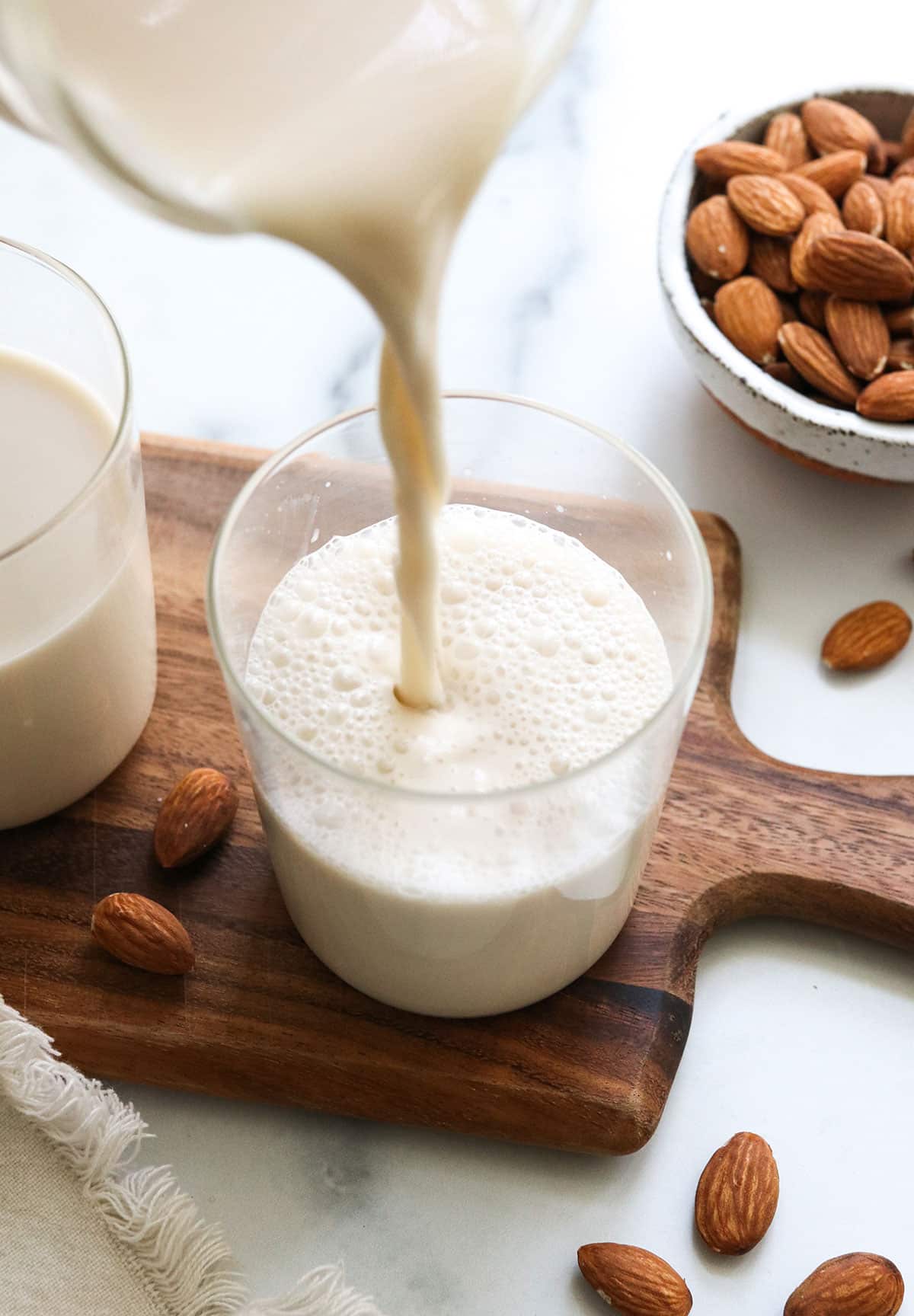
Homemade Almond Milk Ingredients
You only need two ingredients to make almond milk:
- Almonds. I tend to use almonds that are not roasted or salted so that the almond milk will have a neutral, mild flavor. However, roasted nuts will work, too! There’s no need to buy blanched almonds (with skins removed), since you’ll be removing the pulp later anyway.
- Water. This is the liquid used for blending this dairy-free “milk.”
You can also make it more flavorful by adding a teaspoon of vanilla extract, 1-2 tablespoons of maple syrup, or up to 4 pitted Medjool dates for sweetness. For a richer consistency, you can also add up to a tablespoon of coconut oil.
Check out my Vanilla Almond Milk and Chocolate Almond Milk for flavor variations.
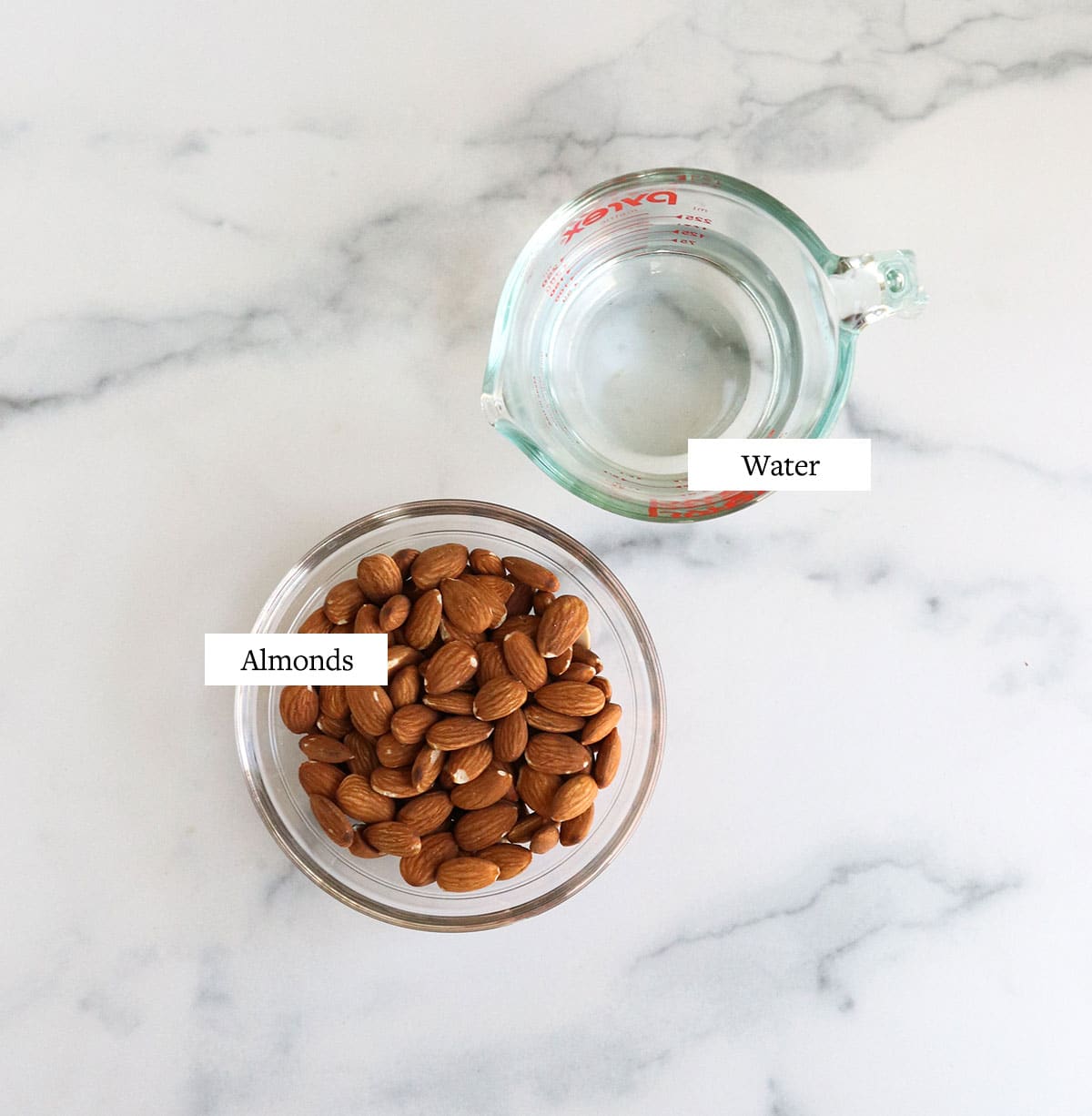
How to Make Almond Milk
Step 1: (Optional)
Soaking almonds ahead of time can make them softer and help them break down more easily in your blender. Research doesn’t necessarily support the idea that soaking nuts improves digestion or reduces anti-nutrients, so this step is mostly helpful if you don’t have a powerful blender.
To soak almonds, add them to a large jar or bowl and cover with at least 2 inches of water. This allows room for them to expand as they soak. (I usually use 2 cups of water to cover 1 cup of almonds.)
Let them soak for up to 8 hours, then drain away the soaking water by pouring the almonds into a fine mesh strainer.
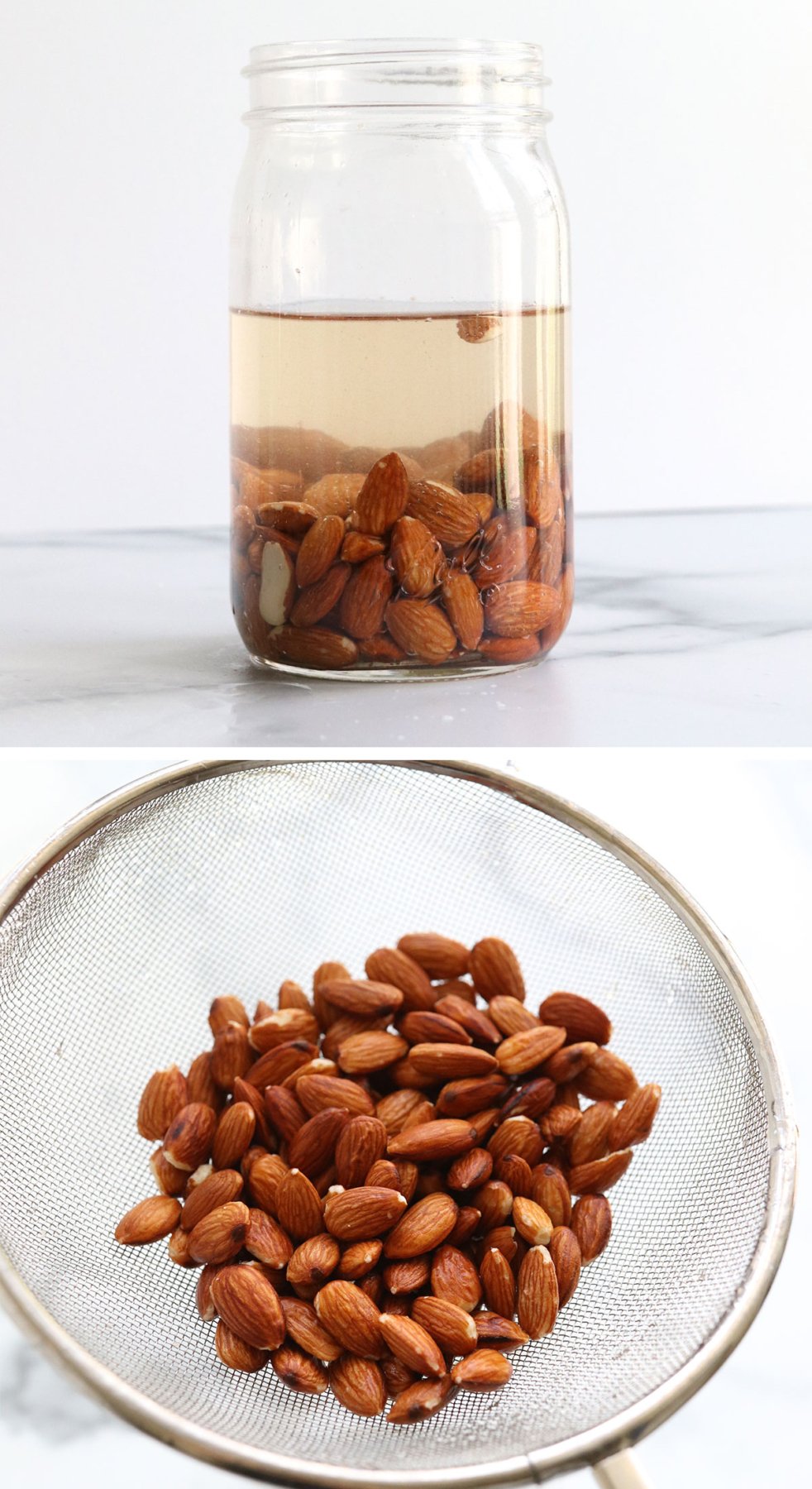
Step 2:
Whether you soaked the almonds or skipped that step, add the almonds into a high-speed blender, along with 4 cups of fresh water. Secure the blender’s lid and blend until the almonds are broken down and the mixture looks creamy, about 60 to 90 seconds.
There should be almost no visible almond pieces when it’s done blending.
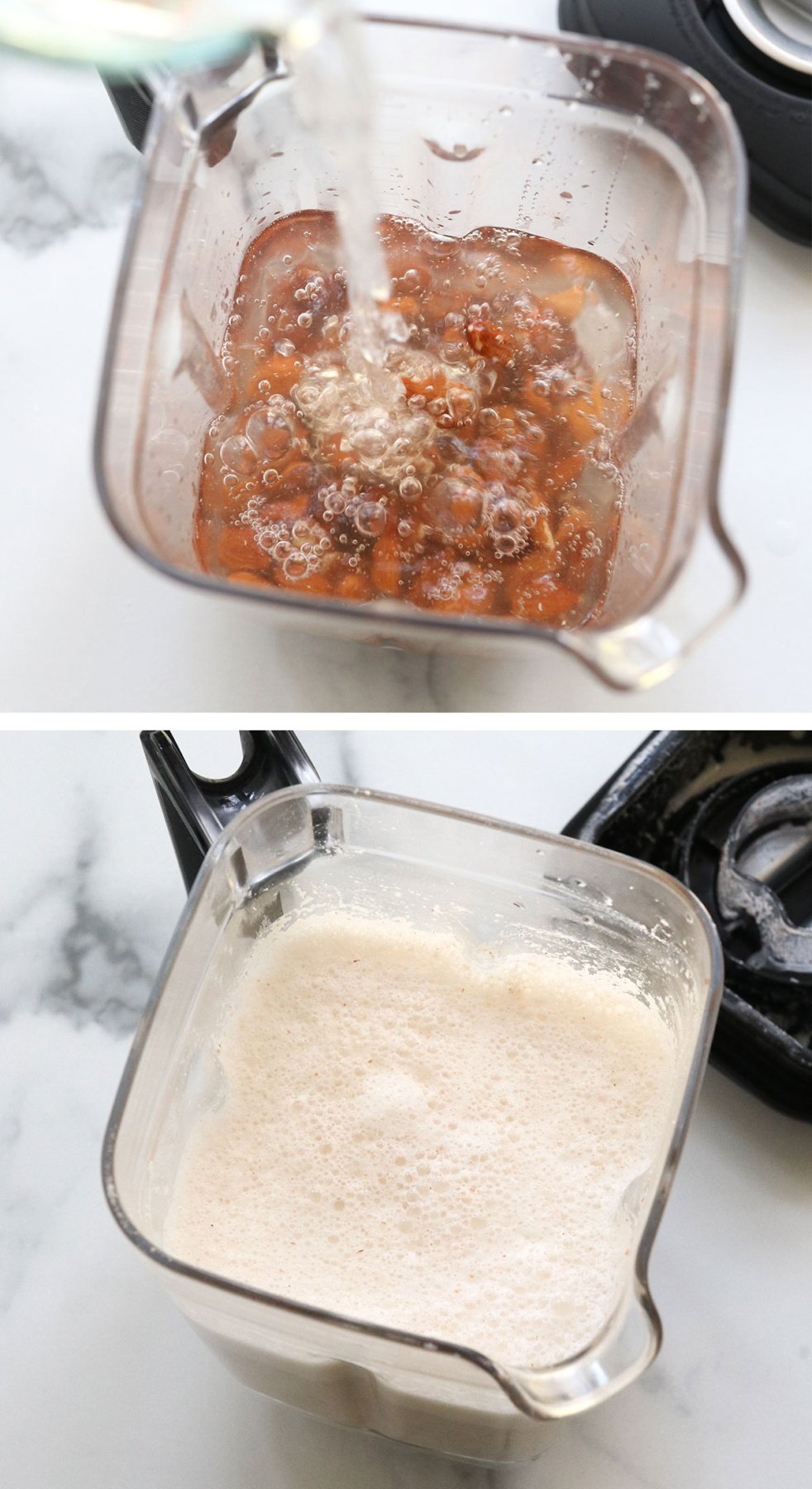
Step 3:
Arrange a nut milk bag or cheesecloth over a large bowl, then pour the blended almond mixture into the bag.
Carefully squeeze the bag, removing as much liquid from the almond pulp as possible.

Don’t want to strain it?
Make Almond Butter Milk instead. (It takes about 1 minute.)
Step 4:
You can use the almond milk right away, or add any extra flavorings to taste, such as vanilla, maple syrup, or a pinch of sea salt.
Note: It’s best not to add the flavorings, like vanilla or cocoa powder, before straining out the pulp. In my experience, the cocoa powder can clog the bag so that you won’t get as much milk out. Plus, it ruins the flavor of the pulp, so it’s not as easy to work with in other recipes later.
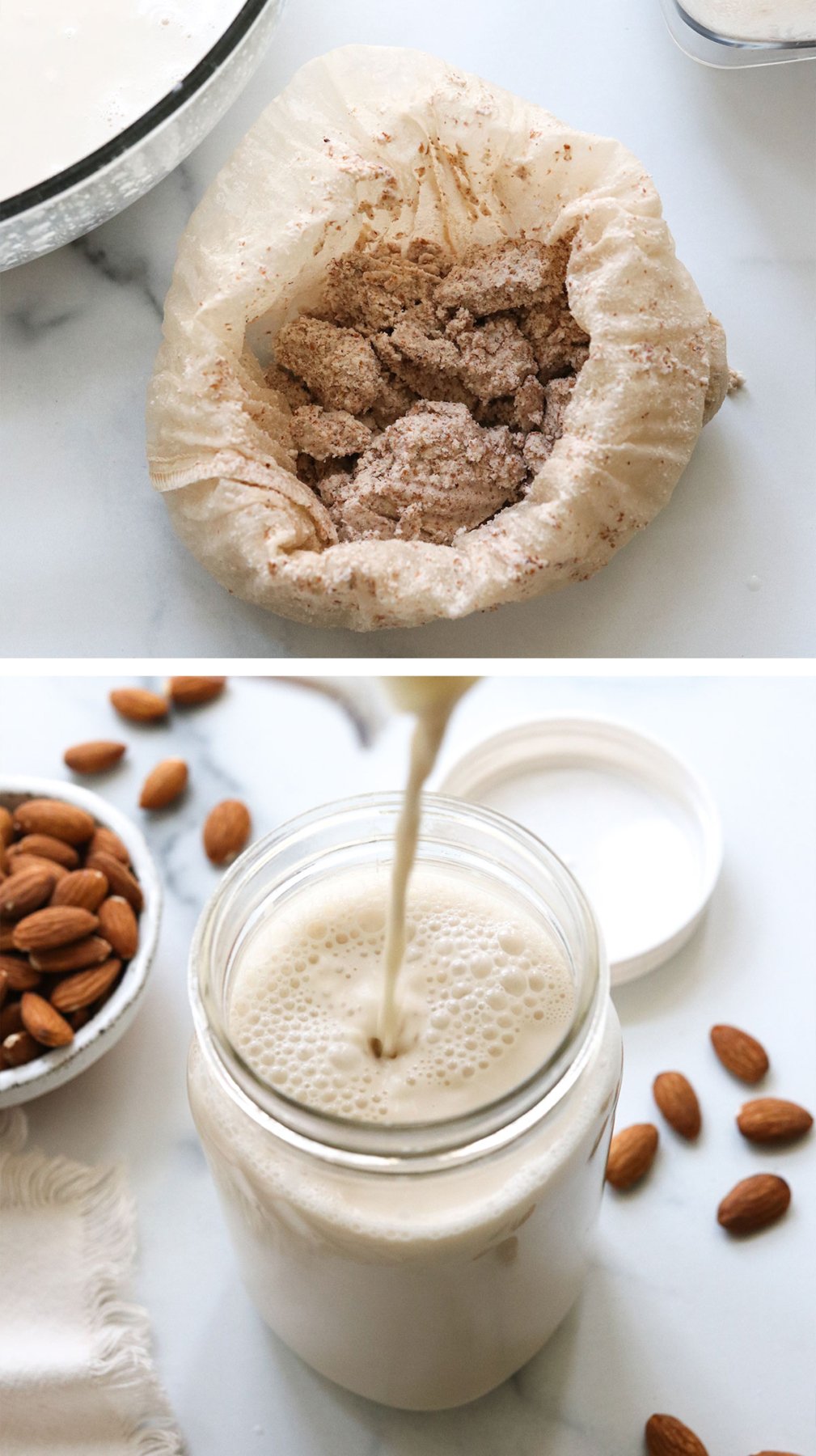
Don’t waste the pulp!
Use the leftover almond pulp to make Almond Pulp Hummus or Almond Pulp Brownies.
Storage Tips
Transfer the almond milk to an airtight container and store it in the fridge for up to 5 days. Or you can freeze it for up to 3 months. Because this recipe doesn’t call for preservatives, it won’t last as long as store-bought milks do. (You’ll be able to tell it’s gone off when the smell or flavor goes sour.)
Be sure to make only what you’ll drink in a week, or plan on freezing the leftovers. You can easily scale the recipe as needed!
Recipes with Almond Milk
Now that you’ve mastered making almond milk, here are some easy ways to enjoy it.
Anywhere you use regular milk, you can typically substitute it with almond milk. Homemade almond milk even creates a luxurious foam for lattes!
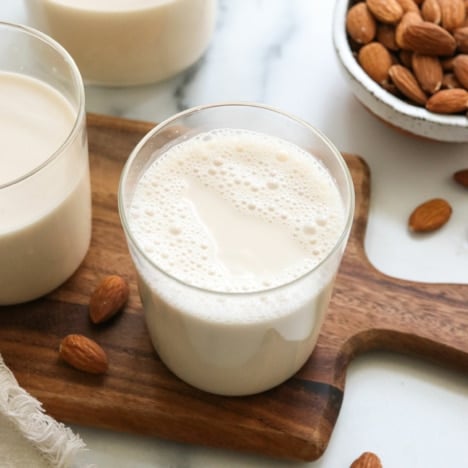
Ingredients
- 1 cup almonds (not salted)
- 4 cups water
Instructions
- Optional Step: To soak the almonds before blending, cover them with 2 cups of water in a large bowl or jar, and let them soak for 4 to 6 hours. (This step may help with blending later if you don't have a powerful blender.) Drain the almonds through a fine mesh strainer before moving on to the next step.
- Add the almonds and 4 cups of fresh water to a blender. Secure the lid and blend on high-speed for at least 60 seconds, until no pieces of almonds are visible and the mixture looks creamy.
- Pour the almond milk through a nut-milk bag or cheese cloth, squeezing well to extract the milk. You can save the remaining almond pulp for another recipe (see the full post for ideas) or discard. If you would like to flavor the almond milk with vanilla or chocolate flavorings, this is the time to whisk in any additions.
- Store the almond milk in an airtight container in the fridge for up to 4 days. (You can freeze leftovers, if needed, for up to 3 months, too!)
Video
Notes
Nutrition
If you try this almond milk recipe, please leave a comment and star rating below letting me know how you like it!


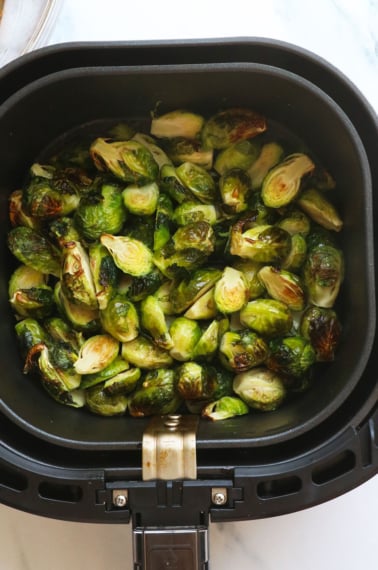
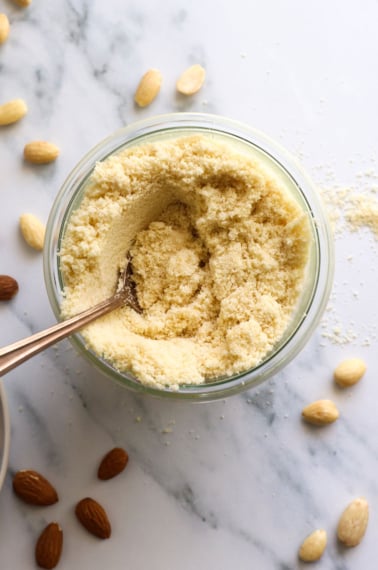
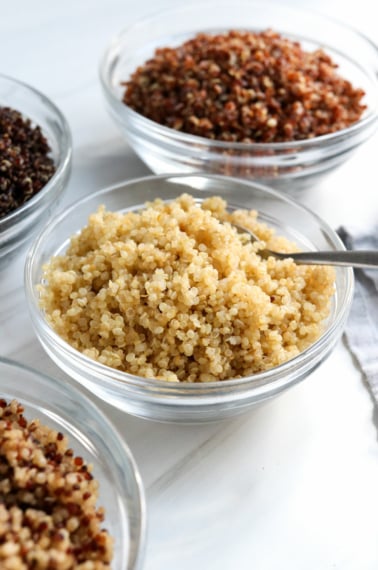
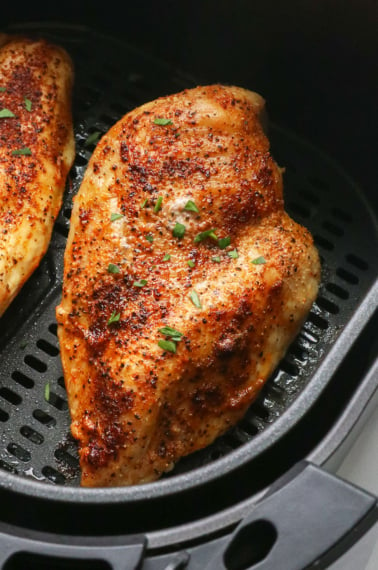






Holy crap I am excited to make this! Would it be ok do you think to perhaps throw in a tsp of cinnamon maybe? Perhaps along with the coco oil? Def gonna do it with hazelnuts as well. How much does a milk bag or cheese cloth typically cost?
You can add any extras you like! My nut milk bag was about $8 with free shipping: http://amzn.to/YI5BXa
what I do with my almond pulp is spread it out on a cookie sheet and let it dry out in a low oven like 250-300 for about an hour or until no longer wet. Then I put the dried out pulp in the blender and give it a quick pulse a few times and there is my almond flour.
Hi Megan! I made this almond milk this week and have been enjoying it in my smoothies – I took your tip and added the coconut oil, vanilla, and maple syrup. Only one problem – it seems to have separated in the fridge – into three layers, milky on the bottom, watery in the middle, and a thin milky layer on top. It’s fine if I stir it back together, just wondering if this is normal?
Yes, after it sits in the fridge for a while, it’s natural to separate. I always shake mine up before using!
This is great! what do you do with the left over almonds that you strain out?
Thanks for this recipe, it looks really good and more importantly thank you for linking to an online source for the milk bag!
Why does this not stay as fresh as the store bought?
Because we don’t add preservatives like the store-bought versions do.
Hi Megan, the jug you bought from HomeGoods is it glass or plastic and what is the make?
Cheers
I actually don’t use that jug anymore, because it was made of plastic. Now, I use a glass jug like this one: http://amzn.to/VMFrCJ (Sometimes they’re available at Home Goods, too, but it’s hit or miss)
I found these at IKEA: http://m.ikea.com/us/en/catalog/products/art/40227983/
I can’t find organic almonds that don’t cost a small fortune. I am on a limited budget and would like to make my own almond milk. Is using raw nuts ok. How much chemicals are actually on the almonds once you remove them from the shell?
I still use raw nuts on occasion, if it makes you feel any better. The organic ones aren’t always available at Trader Joe’s! I wouldn’t be able to tell you how many chemicals may still be on the nuts, though… we’d probably need our own lab for that!
Can you use a French coffee press to separate the milk from the compost?
I’ve never tried it, but it sounds like it might work! The french press filter still may allow some pulp to strain through, but it wouldn’t be a big deal.
I strained my almond milk into a jar through some white unbleached fabric, which caught most of the pulp. Then I spooned the remaining pulp into my coffee press to finish. I only got a couple of teaspoonsful of milk with that, but my pulp was so fine that most of it came through to the top of the coffee press filter. I had run my soaked almonds for two minutes in the Vitamix. There is still some sediment in the bottom of the milk, but it is so superfine that after stirring it back into the milk I can’t even tell it’s in there. Next time, I’m planning to leave my milk unstrained and see if it makes a difference. I’m also planning to use 1/2 cup of almonds instead of a full cup, based on a previous commenter’s remark, because I don’t care for the almond taste of the milk. I just use it to replace cow’s milk (for drinking mostly) and don’t want it flavored or nutty, or sweetened. And using 1/2 cup of almonds would certainly make the almonds go further!
I pour boiling water from my electric teakettle over the almonds and let them soak until they are cool enough to handle, slip the skins off,, drain the water, and add 4 cups of the filtered hot water to the almonds and set in the fridge overnight. Next morning, I run the almonds and water plus 2 organic pitted dates and a pinch of salt in my VitaMix for 3-1/2 minutes, add a cup of ice and run 1/2 minute more. I have enough for breakfast smoothie and fill a quart carafe with the rest. No pulp, just foam. If I strain through a fine nylon mesh strainer, there is nothing but foam that drips through. Milk is rich and creamy. Always needs a little shake in the lidded carafe but it’s smooth as store bought without the gums and fillers. Plenty of oil in the nuts, don’t need added oil. If I’m short of almonds, I top off with organic raw cashews. I buy organic nuts from Aldi or Costco when they have them but Costco here in NC is inconsistent. My old store in CA always had all varieties of organic nuts and nut butters and a huge selection of organic fruits and veggies.
I want to try making Almond milk and have a question first! Can I use Coconut butter instead of Coconut oil? My family prefers the taste of Coconut butter over coconut oil… Do you even taste the Coconut oil?
Thank you Megan!